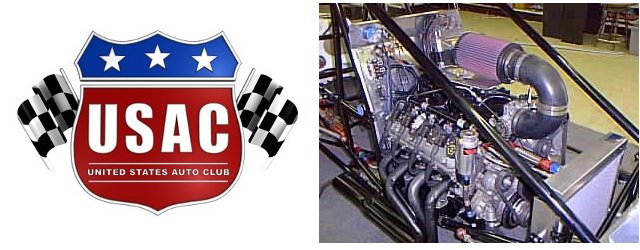
From Dick Jordan
The Schwanke LS-based Chevrolet sealed engine has been approved as an option for USAC Sprint car competitors and will be included in specifications included in the 2011 USAC Competition Rules.
Extensive testing and development has been completed on the engine which was permitted in the 2009 and 2010 USAC Western and Rocky Mountain series. Its development and performance has been monitored and a total of six (6) engines appeared and competed during 2010, exhibiting reliability and competitiveness.
Among budget benefits of the new engine package are price ($15,999), projected overhaul and maintenance schedule (30 races) and fuel mileage gains (better than 30%).
The engine’s characteristics are 377 cubic inches, a maximum allowable RPM of 7,900 and a 12-1/2-1 maximum allowable compression ratio.
Each of these engines has documented seal numbers and the USAC Chief Steward reserves the right to exchange or confiscate Chevrolet computers. Dynamometer sheets are available for the 650-horsepower engines delivering 600 foot-pounds of torque. The engine utilizes some 50 Chevrolet parts, including blocks and heads. A complete list of parts, plus delivery and shipping information is available on request.
The new engines currently comply with USAC Western and Rocky Mountain Sprint rules (410 c.i. with restrictions), with a waiver on electronic ignition and fuel delivery.
USAC recognizes the economic issues facing today’s competitive racing teams and has also instituted a new Midget RPM program for 2011 to accompany this sealed engine program, representing bold steps toward cost-saving measures.
USAC also embraces affordable new mainstream technology currently utilized by OEM automobile makers as the manufacturers’ huge investments will aid our industry in achieving efficient performance and superior dependability.
The Green Issue, not commonly associated with auto racing, has now become one of our sport’s targets as we strive to conserve fuel and create fewer carbon emissions.

